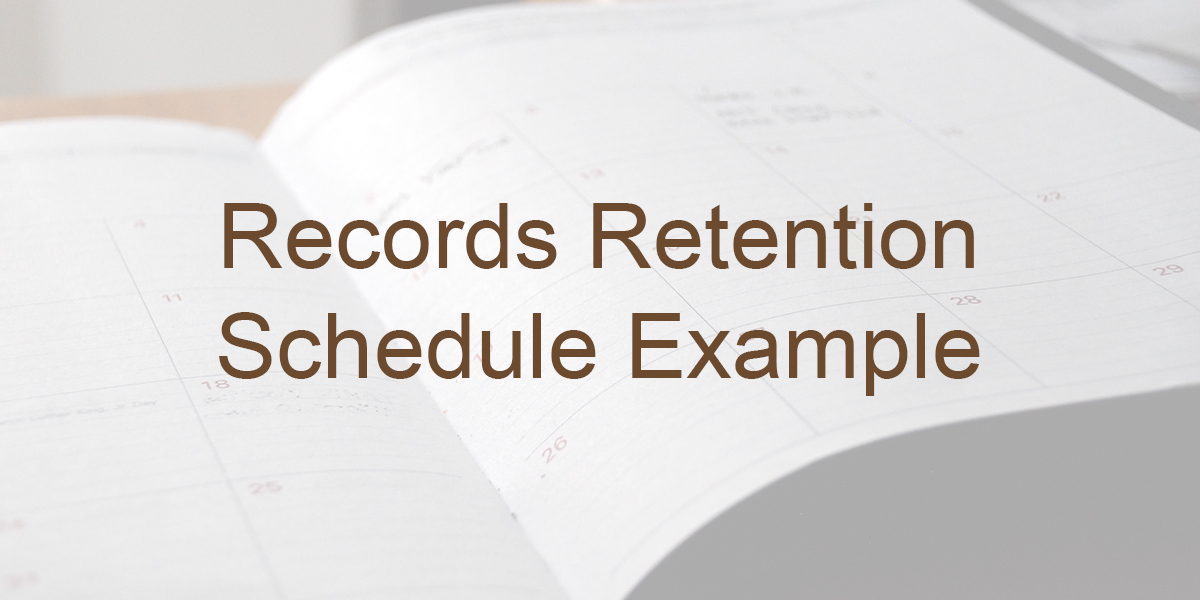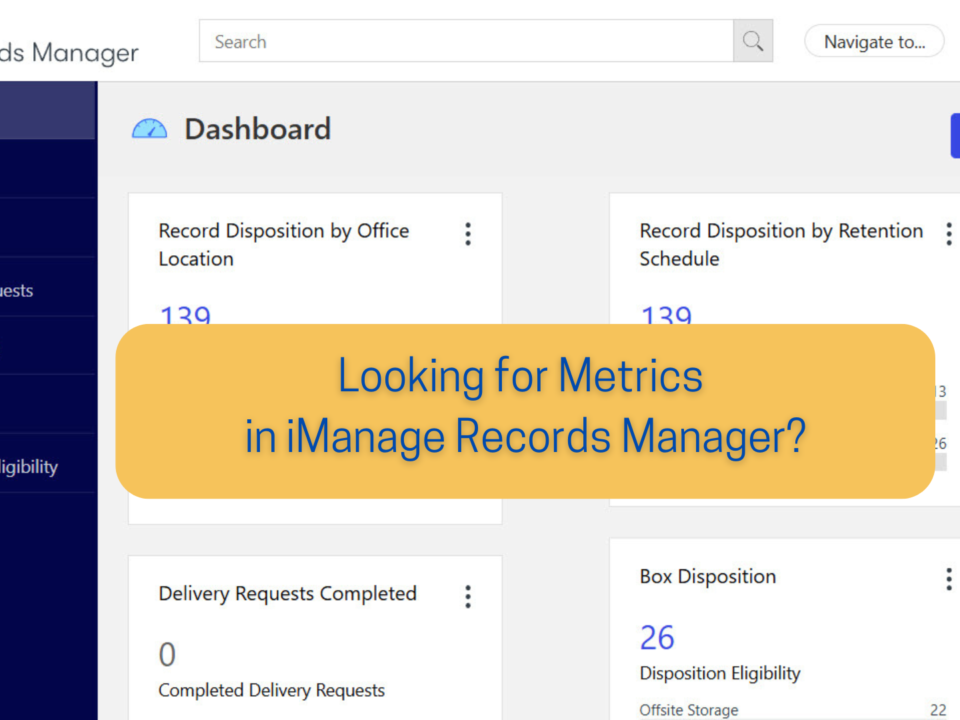A Retention Schedule Example

Last week we went over how to build a retention schedule and some things that law firms should consider in doing so. This week I want to show you an example so you can visualize what a good retention schedule will look like for your firm.

This is based on the different areas of law that are practiced by a fictional law firm. Most matter file retention is based on a matter close date, plus a number of years. The clock doesn’t start ticking until a matter is officially closed. At that point, they add another 10 years.
At its simplest, a records retention schedule is a list of the types of records with their associated retention period and any additional instructions. But, it’s not that simple to create. Your records retention schedule must consider laws surrounding your area of practice.
Specific Considerations
While researching retention periods, keep in mind the following legal and compliance considerations. Each state has different laws, familiarize yourself with yours.
- Ethics: Lawyers are subject to ethical rules, ethical opinions, and case law that applies to professional conduct
- Rules of Evidence: Court regulations that govern the use of evidence
- Security: Federal, state, and local data security, as well as privacy and identity theft regulations that apply to all businesses
- Business Law: Federal, state and local record-keeping regulations that apply to all businesses
California Law Firms
If you are in California, you must consider the California Bar Rules of Professional Conduct when you make your retention schedule. The following sample citations will help.
- Rule 3-700(D)(1) 731 Termination of Employment – What to do when the client relationship ends
- Rule 4-100 (B)(3) Preserving Identity of Funds and Property of Client – Requires records regarding entrusted client property and funds to be maintained five years after the last funds and property have been disbursed to the client. *Note – the file can be kept longer if the firm deems it necessary for administrative needs.
California criminal and probate law has further rules that should be adhered to in your retention schedule if you practice them.
- Los Angeles Bar Association Formal Opinion 475 (1994), 420 – Criminal files must be maintained for the life of the client.
- California Probate Code Section 700 to 735 – Describes responsibilities for returning Estate Planning client files.
Look closely at the rules and regulations surrounding the type of law that you’re practicing to ensure your retention schedule follows them. Building a retention schedule is both an art and a science. No schedule applies to all law firms. You get to develop a program that works for you.
These are just some things to keep in mind when you create your retention schedule. If you need individualized help with your records management, schedule a meeting with me.



